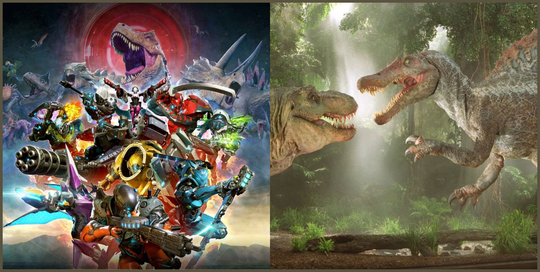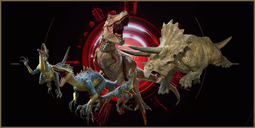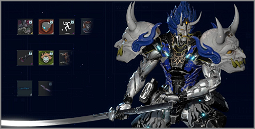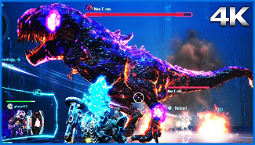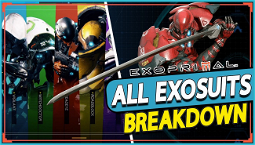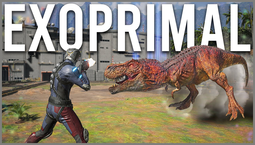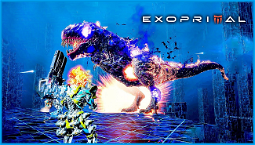Exoprimal: 10 Exotic Dinosaurs That Could Spice Up the Game
Exoprimal is a game about dinosaurs, so you’d be forgiven for expecting a wide variety of fearsome prehistoric foes to throw themselves at your Exofighter. Unfortunately, Capcom’s multiplayer dinosaur-fighting online game is currently lacking when it comes to enemy variety, with a limited roster of enemies that has led to some pretty repetitive encounters.
While the game does feature plenty of unique dinosaur species, the roster is limited to just a handful of creatures, and there’s little variation among the enemy variants. Most players would agree that the game could benefit from more diverse dinosaur species, but where would you find them?
Thankfully, as the developers at Capcom’s Osaka studio work to address Exoprimal’s issues, we’ve taken the time to put together a list of ten potential dinosaurs that we think could vastly improve the game. Some are returning dinos from the franchise’s past, while others are brand new additions, but all of them represent some of the best dinosaurs in video games, and would make exciting new enemies in Exoprimal.
Inostrancevia
We’ve been dreaming of a dino game featuring mammal-like dinosaurs for a long time now, and Inostrancevia fits the bill perfectly. This mammal-like, quadrupedal theropod hails from the PS1-era Dino Crisis games, and represents the perfect opportunity to introduce a new type of enemy to Exoprimal.
Inostrancevia could be a powerful addition to Exoprimal’s roster, and we’d love to see it used as a mid-range support class. These theropods could use their claws to dig for resources, or to cause damage to the enemy’s base. We could even see Inostrancevia used as a combat class, with a powerful tail swipe and the ability to dig underground to evade enemy attacks.
Oviraptor
We’ve already got Velociraptors in Exoprimal, but their smaller, bird-like cousin Oviraptor would be a perfect addition to the roster. Oviraptors are often known as ‘Raptors with brains’, and would introduce variation among Raptor-type enemies. We could even see an Oviraptor class used to target overdrive energy, drain it from the enemy, or steal it from the team’s dominator.
Oviraptors are a fan-favorite, and deserve their place in the spotlight. We’d love to see a new Oviraptor game in the near future, and an enemy in Exoprimal would be a great way to introduce this curious theropod to a new generation of players.
Dimetrodons
While not technically dinosaurs, Dimetrodons are ancient marine reptiles, and could provide a unique hunting experience in Exoprimal. Dimetrodons would be formidable opponents, thanks to their long necks, which could be used to pull Exofighters into the water, or to whip them with a powerful tail attack.
Dimetrodons would pose a considerable threat in water-centric environments, and could be used to target the enemy’s structures. Dimetrodons could also be used as a support class, with a long, serpentine neck that could be used to lay eggs or heal allied dinosaurs.
Compsagnathus
Just because you’re small, doesn’t mean you can’t be annoying. These tiny theropods are the smallest of the dinosaurs, and would make for an excellent support class in Exoprimal. Compsagnathus could use their speed to evade attacks, and drain overdrive energy from the enemy.
Alternatively, Compsagnathus could be used as a stealth class, or as a support class that steals the team’s dominator. Compsagnathus could also be used as a combat class, with a range of quick strikes and long-range attacks, but they’d need to be balanced to ensure they don’t become overpowered.
Brontosaurus
Brontosaurus is an herbivorous dinosaur, but don’t let that fool you – this giant could be a terrifying enemy, thanks to its considerable size. Brontosaurus would be a tough opponent to take down, and could be used to target the enemy’s structures.
Brontosaurus could also be a support class, with a long neck that could be used to lay eggs or heal allied dinosaurs. We could even see a combat class using Brontosaurus, but this would require a lot of specialization to ensure it doesn’t become overpowered.
Mosasaurus
Mosasaurus is a long-necked, carnivorous aquatic reptile, and would pose a terrifying threat to any Exofighter who found themselves in water-centric environments. Mosasaurus could be used to target the enemy’s structures, or to pull Exofighters into the water to deal damage.
Mosasaurus could also be a support class, with an elongated neck that could be used to lay eggs or heal allied dinosaurs. Mosasaurus could be used as a combat class, but would need to be heavily specialized to avoid being overpowered.
Quetzalcoatlus
Quetzalcoatlus is the largest known flying creature, and would pose a difficult challenge for any Exofighter who is unlucky enough to be targeted by one of these theropods in the air. Quetzalcoatlus could be used to target the enemy’s structures, or to pull Exofighters into the air to deal damage.
Quetzalcoatlus could also be used as a support class, with a long, serpentine neck that could be used to lay eggs or heal allied dinosaurs. Quetzalcoatlus could also be used as a combat class, but would need to be heavily specialized to avoid being overpowered.
Therizinosaurus
Therizinosaurus may be herbivores, but don’t be fooled – they could throw Exofighters with their long arms, and cause direct damage. Not only that, but they could use those arms to lay eggs or heal allied dinosaurs. Therizinosaurus could be used as a support class, with a long neck that could be used to lay eggs or heal allied dinosaurs.
Therizinosaurus could also be used as a combat class, with a range of long-range attacks, but would need to be heavily specialized to avoid being overpowered.
Spinosaurus
The Spinosaurus is most famous for defeating the Tyrannosaurus in Jurassic Park 3, but would make for a formidable opponent in the world of Exoprimal. The Spinosaurus is a long-necked theropod, and could be used to target the enemy’s structures.
